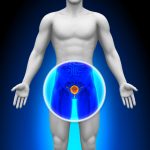 Although November is considered the month for prostate cancer awareness, we feel like it should be discussed all year round. So, we compiled a list of our top articles that touch upon the topic of prostate health. From news breakthroughs and prevention tips to facts about prostate cancer and treatment options, these articles will cover many areas relating to prostate health.
Although November is considered the month for prostate cancer awareness, we feel like it should be discussed all year round. So, we compiled a list of our top articles that touch upon the topic of prostate health. From news breakthroughs and prevention tips to facts about prostate cancer and treatment options, these articles will cover many areas relating to prostate health.
In 2017, it was estimated that 161,360 men would be diagnosed with prostate cancer. Prostate cancer is the third leading cause of death among men in America. Although overall death rates have been on the decline, some ethnic groups are still seeing high numbers of death as a result of prostate cancer, including Blacks and Hispanics. As more research is conducted in regard to prostate cancer, better treatments can be developed along with improved prevention tips.
Advertisement
The following articles will include prevention tips, causes, remedies, and breakthroughs regarding prostate health.
Top health articles of 2017 about prostate health

Prostate inflammation (prostatitis): Causes, symptoms, and treatment
Prostatitis (prostate inflammation) causes painful urination, and urinary tract infections (UTIs) increase the risk of developing the condition. Prostatitis can be referred to as an infection of the prostate, but inflammation often occurs without a known infection. Roughly five to ten percent of prostatitis cases are caused by a bacterial infection, but luckily, it does not lead to an increased risk of prostate cancer.
Although an enlarged prostate commonly affects older men, men of all ages are prone to prostatitis, with 25 percent of hospital visits being accounted for by younger and middle-aged men.
There are three main types of prostatitis: acute bacterial prostatitis, chronic bacterial prostatitis, and chronic nonbacterial prostatitis. Acute bacterial prostatitis is a bacterial infection that causes inflammation that is typically uncommon but comes with severe symptoms. Chronic bacterial prostatitis occurs from recurrent urinary tract infections that enter the prostate gland. Symptoms may be similar to acute bacterial prostatitis but less severe and fluctuating. Lastly, chronic nonbacterial prostatitis is the most common form of prostatitis that presents urinary and pelvic pain for at least three to six months. Continue reading…

Avoid these 4 foods for a healthier prostate
If you’re worried about the health of your prostate, it may be time to put down the burger and step away from the steak. Research has shown that certain foods may be detrimental to prostate health and increase your risk of serious health issues. So which foods are the ones you need to avoid? Below you will find four of the worst foods for your prostate and how they impact the gland. Continue reading…

This one thing will keep your prostate healthy…
If you’re an aging man, you should be concerned about your prostate health. It’s a sensitive topic, and to this day, many men prefer not to discuss it at all. Yes, it may take extra effort to make an appointment and speak frankly with your doctor about your “embarrassing” problems. But an open conversation with your doctor can literally save your life.
Advertisement
Whenever we talk about our well-being and our chances of developing serious health conditions, there are two sides of the story. There are established risk factors that we cannot really alter, such as our age, our race, and our genetics. But then there are lifestyle factors that we can and should change. These commonly include switching to a wholesome diet, quitting smoking, and managing a healthy body weight. Continue reading…

4 factors that increase your risk of prostate cancer
Prostate cancer is one of the most common male cancers, though many men are unaware of the factors that put them at risk. While it is important to get checked regularly, you may want to increase the frequency of your screening appointments depending on whether you have any of these risk factors.
Obesity. Are you overweight or obese? Research has shown a strong link between the presence of excess body fat and an increased risk of prostate cancer, as well as ten other cancers. Try easing yourself onto a healthy, balanced diet and incorporating more exercise into your daily routine in order to help reduce your risk. Continue reading…
